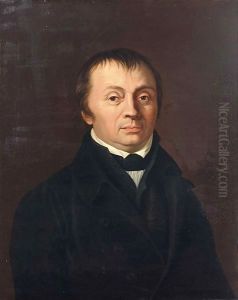Johann Heinrich Pfenninger Paintings
Johann Heinrich Pfenninger was a Swiss artist and engraver born in Zurich in 1749. His contributions to the art world during the late 18th and early 19th centuries were significant, particularly in the realm of engraving and printmaking. Pfenninger's work is characterized by its detailed precision and the artist's keen eye for capturing the essence of his subjects. Despite the prominence of various art movements during his lifetime, Pfenninger's style remained distinctly his own, blending elements of realism with a meticulous attention to detail that has allowed his work to stand the test of time.
Pfenninger's career was notably diverse, encompassing not just engraving but also painting and drawing. He was deeply influenced by the cultural and artistic environment of Zurich, which was a hub for intellectual and artistic exchange during his lifetime. This environment provided him with the opportunity to study under renowned artists and to be exposed to a wide range of artistic styles and techniques. Pfenninger's engravings often featured landscapes, portraits, and scenes from daily life, showcasing his versatility and ability to capture a wide range of subjects with finesse and accuracy.
Throughout his career, Johann Heinrich Pfenninger exhibited a profound dedication to his craft, contributing significantly to the development of engraving techniques. His works were highly sought after by collectors and art enthusiasts of his time for their beauty and technical excellence. Pfenninger's influence extended beyond his immediate circle in Zurich, impacting the broader European art scene. Despite the passage of time, his works continue to be studied and admired for their contribution to the art of engraving and printmaking.
Johann Heinrich Pfenninger passed away in 1825, leaving behind a legacy that has endured in the art world. His dedication to his craft and his ability to capture the world around him with such detail and beauty have ensured that his works remain relevant and celebrated. Pfenninger's life and artistry serve as a testament to the enduring power of visual art to communicate across generations and cultures.
